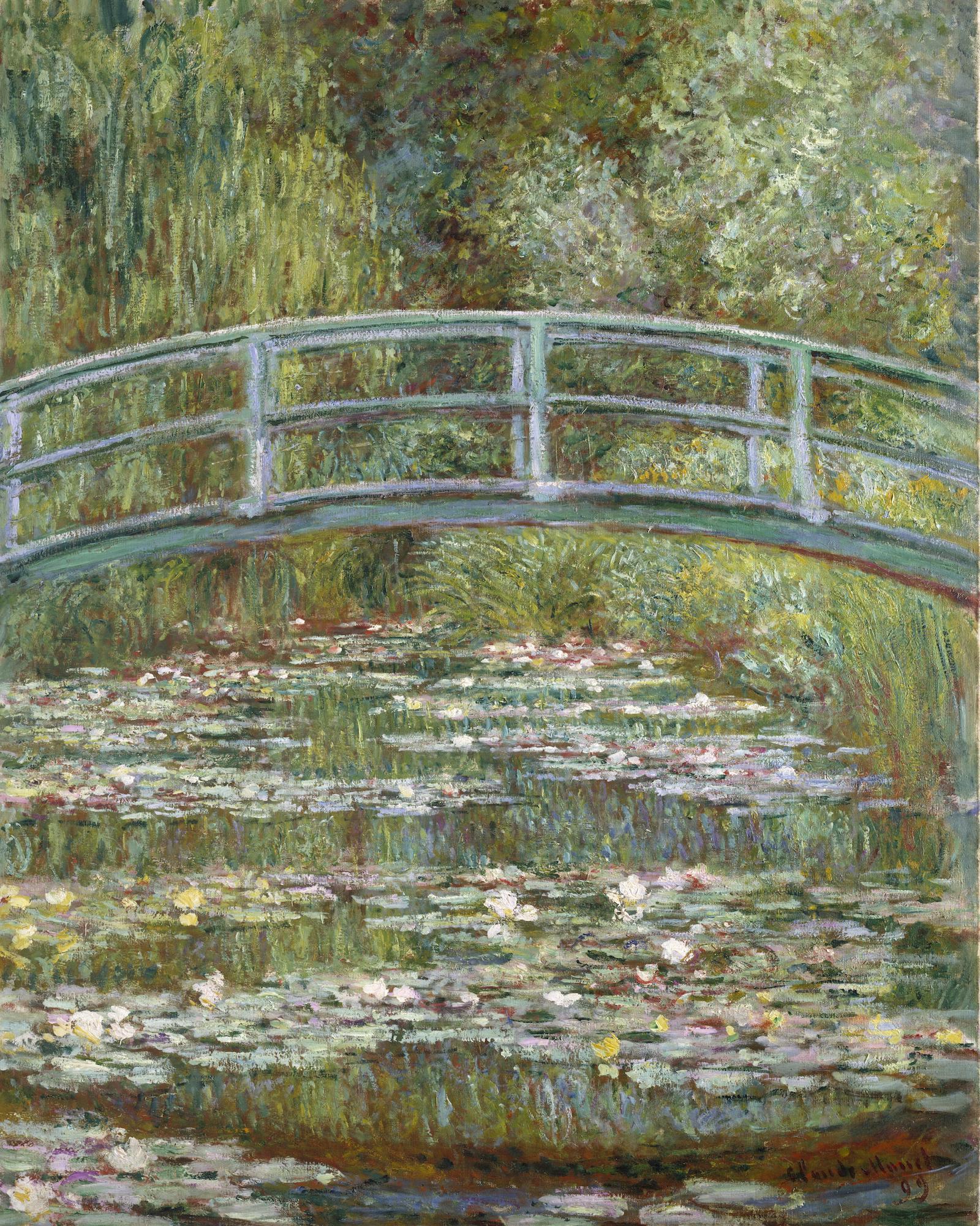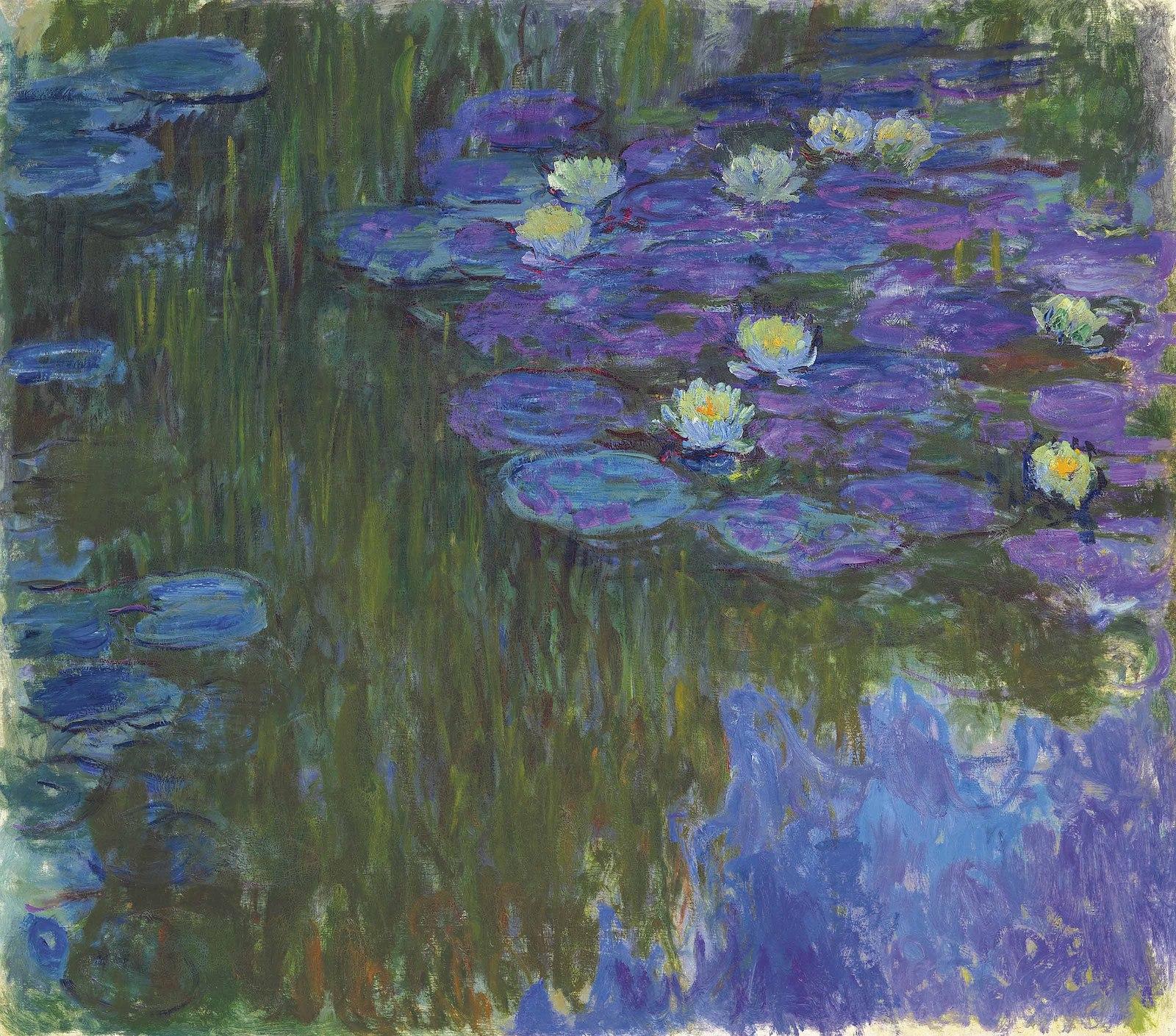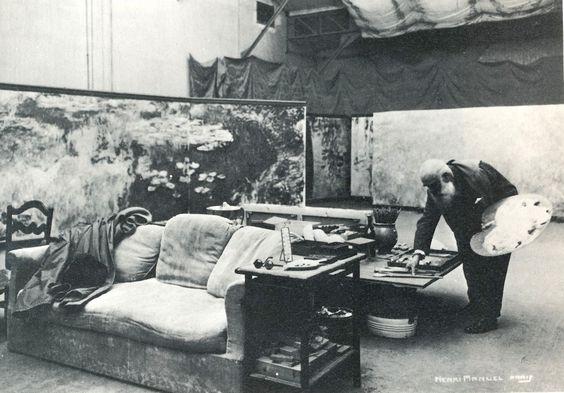Monet’s first water lily series was executed between 1897 and 1899. This initial round of painting yielded the most traditional results. Although the above example is closely cropped and features Monet’s impressionistic blur, standard details such as a horizon line and orienting context were still included by the artist at this point.

Claude Monet, Water Lilies, 1906. Oil on canvas. 35 3/8 × 37 1/16 in.
Between 1897 and 1926, Claude Monet painted approximately 250 waterscapes of his favorite subject towards the end of his life: Water lilies.
Though Monet painted in series throughout his career, the subjects he focused on before the late 1890s were often a bit more contemporary. The artist once said of the water flowers: “One instant, one aspect of nature contains it all.”
Each time he returned to the flowers, Monet seemed to fixate on a new aspect of their presentation—sometimes the result of a purely artistic decision and sometimes a reaction to his cataract-impacted vision. The latter half of these paintings in particular are lauded as stunning feats in compositional experimentation and innovation, despite the artist's frustrating battle with deteriorating vision.

Claude Monet, Bridge over a Pond of Water Lilies, 1899. Oil on canvas. 36.4 x 29 in. The Met.

Claude Monet, Nymphéas en fleur, c. 1914-17. Oil on canvas. 63 x 70 7/8 inches. Private collection.
As mentioned before, the artist’s output generally became more experimental with each succeeding series. Time passed and his paintings of water lilies became less grounded, depicting pure waterscapes absent of all non-canvas borders and edges. These were studies in color and form.
Around 1914, the artist’s declining vision began to truly impact his work and frustrated his painting process. At this time, his paintings oscillated in their degree of fuzziness and color accuracy.

Claude Monet, The Water Lily Pond, 1917-1919. The Albertina Museum, Austria.
The artist told writer Francois Thiebault-Sisson, “reds had begun to look muddy,” and “my painting was getting more and more darkened.”
Though doctors spoke to the artist about cataract surgery, he was too nervous at the prospect to sign on. In 1922, he was prescribed drops that greatly reduced his symptoms. The artist was ecstatic but his relief was, unfortunately, short-lived.
As his symptoms returned, Monet finally agreed to get surgery in early 1923. Sadly, the whole process caused the artist and his doctors a great deal of frustration and pain. Even in his brief periods of relief, Monet generally remained aggravated and even took to destroying some of his preoperative canvases.

Monet in his studio photographed by Henri Manuel.
Two years passed before—after several doctors, operations, and the receipt of special lenses—Monet was happy enough with his vision to fully resume his artistic practice. He primarily spent this time correcting his preoperative works. He also, fortunately, was able to finish his Grandes Décorations’ of Waterlilies before he died in December of 1926.




























